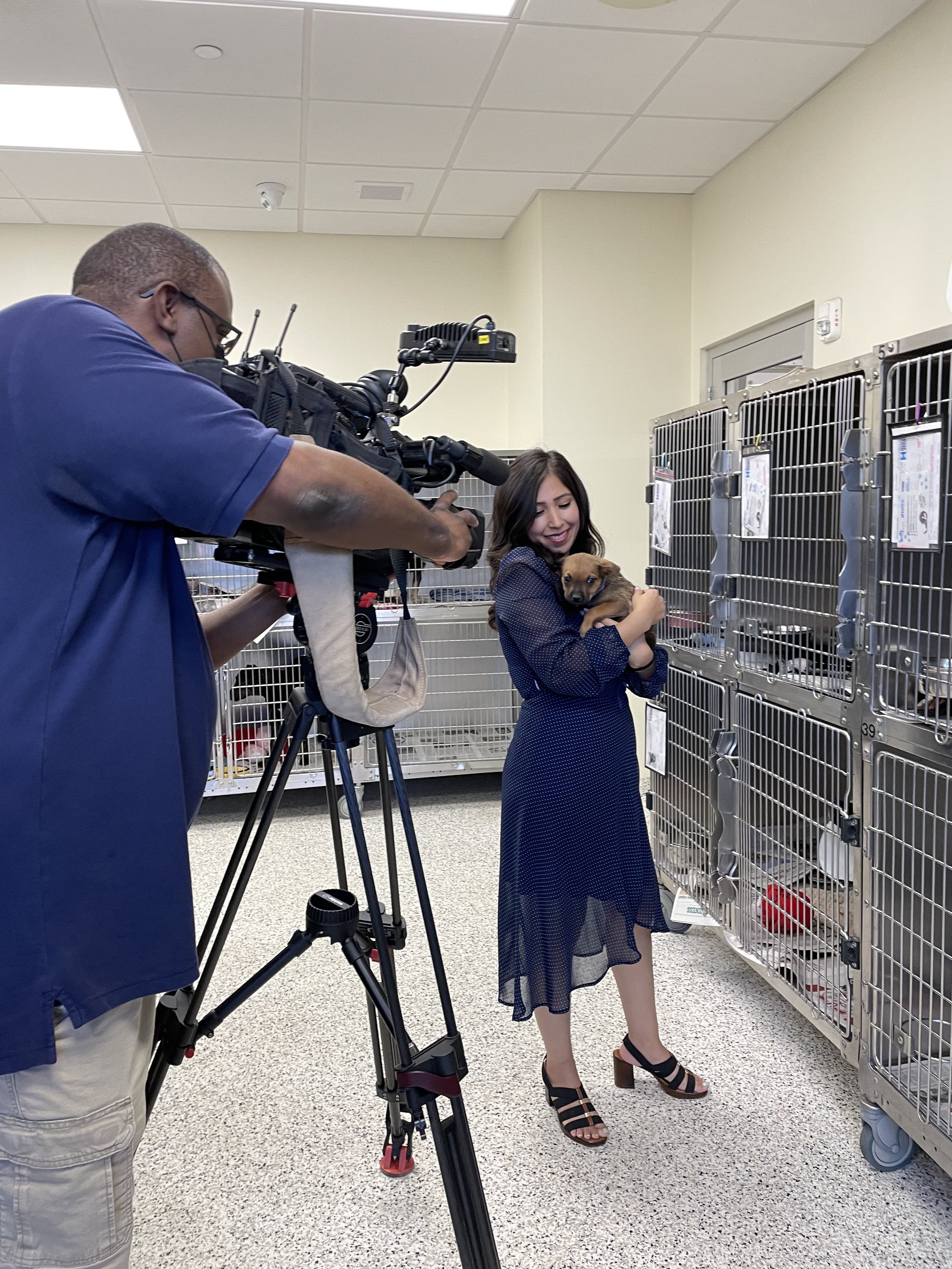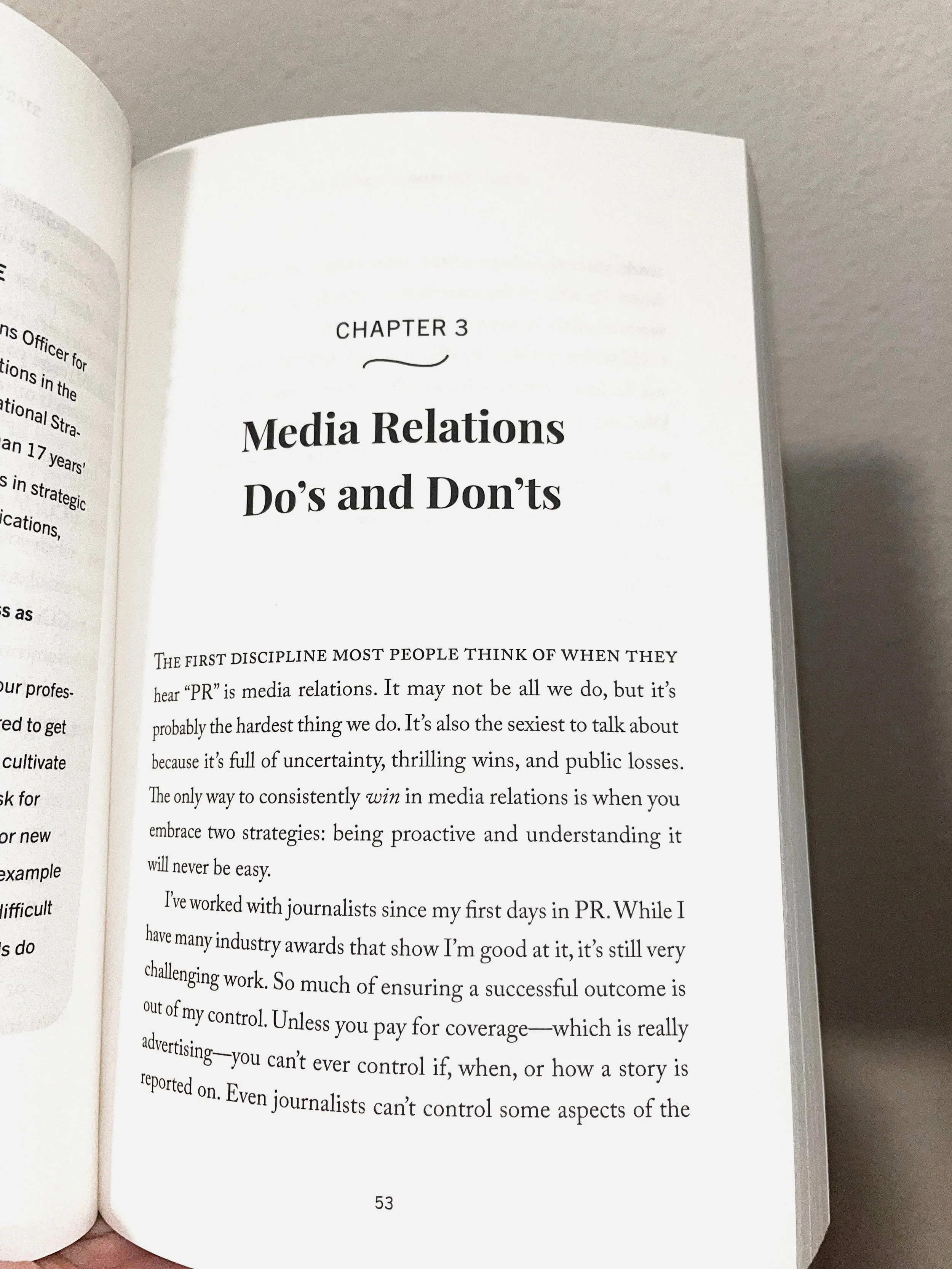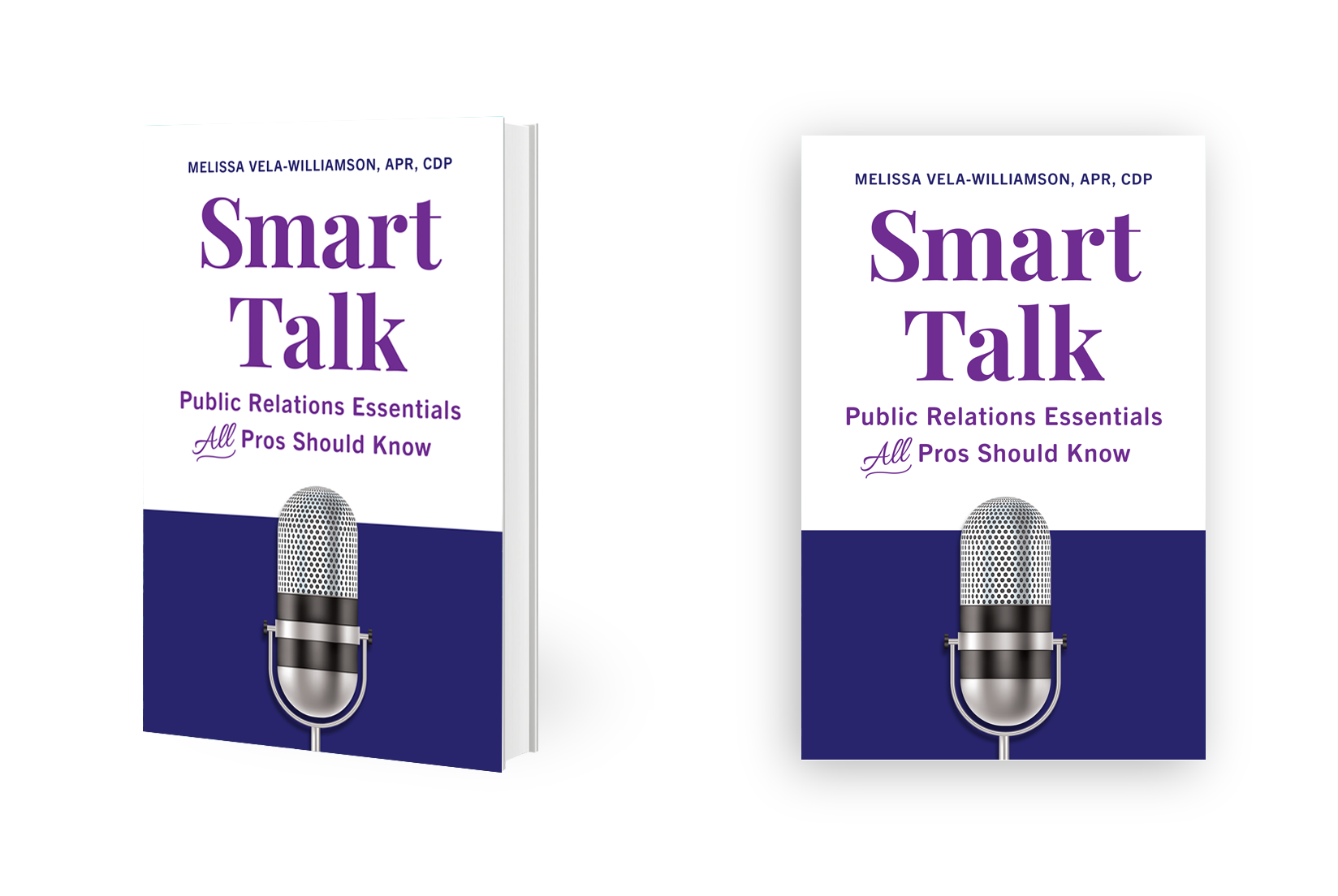Book Sneak Peek: Media Relations Do's and Don'ts
San antonio humane society PR team member introduces a puppy to a journalist
I value the feedback I’m getting from readers of my book, Smart Talk: Public Relations Essentials All Pros Should Know. If you know me, I want to share everything I can about a topic. Sometimes all at once! In that spirit, some of the fan favorites from each chapter will be shared in this Sneak Peek blog series. Read on for a gem from each chapter.
In Chapter 3, “Media Relations Do’s and Don’ts,” I share best practices on topics such as setting media coverage goals, pitching story ideas and knowing what’s newsworthy. Like me, you’ll probably feel nervous when pitching journalists. The first phone call is the hardest one! Building long-term relationships and becoming a “source” should be our ultimate goal. Read this excerpt with tips on media relations. For more important details, order your own copy on Amazon or purchase an autographed copy here.
Media Coverage Goals
Before you begin any media relations campaign, you should determine your media coverage goals. What are you trying to achieve? What’s the motivation for putting yourself or your organization in the position to work with the media? It’s not always comfortable!
The very first reason an organization may want to work with the media is to try to satisfy its messaging needs in a proactive manner. For example, when a company is building a new headquarters, they may want to share updates and certain milestones with a large audience at specific times. Or a company may need to get in front of an emerging crisis like an oceanic oil spill by providing factual information to help mitigate misinformation.
Another important goal for media coverage is to share positive news and build brand equity with journalists and the community. Similar to managing our physical health, proactive management of an organization’s reputation is much easier to maintain than trying to rebuild what’s lost. Sometimes, reputation damage can’t be repaired until the journalist moves on or a lot of time, effort and money are spent.
Pitching Story Ideas
When you share a story idea with a reporter, that’s called sending them a pitch. Most pitches are sent via email, but pitching can happen in person, over the phone or in social media messages. I’ve even successfully pitched an idea to a reporter in the bathroom! Pitching is when you share a concise message about a story opportunity and why it should be covered. It’s your attempt to sell an idea and see if the journalist is interested. And it’s certainly a pitch–throwing out an idea to see if journalists are interested in taking a swing at it.
This “sales process” is one of the hardest aspects of media relations for PR pros. From pitching, following up and coordinating a story, it feels like you’re working to quickly close a deal before some imaginary window closes.
After you pitch a story, allow for a waiting period to see if the reporter bites. I try to give them a response window of a business week before I check back in. Most times, you’ll have to follow up with the journalist to see what they think. Or find out if they even saw the email! Following up isn’t comfortable, especially on the phone. It’s easy to feel like a solicitor when you know you’re calling someone unannounced.
Even after all these years, I still have to psych myself up before I dial. It’s uncomfortable, but every single time I’ve made the effort to call a journalist, it’s helped me highlight the story opportunity, build rapport, or find out what breaking news is stealing the show. Then I’m able to tell the client what news they’re competing with for coverage or what breaking news story is in the way. There’s an old saying about news coverage: “If it bleeds, it leads.” Simply put, traumatic or dramatic news tends to get coverage at the top of the news hour. Many times, that’s a fire, shooting, or bad car accident. When such news happens unexpectedly, it’s called breaking news, and breaking news can derail your interview or press conference plans. This is why you’ll always have to be flexible and solution-oriented whenever you do media relations.
—
For more guidance, other PR pro’s opinions, important real-world key terms and hard-learned lessons, get your copy of Smart Talk: Public Relations Essentials All Pros Should Know. Audiobook coming in Summer 2023!



